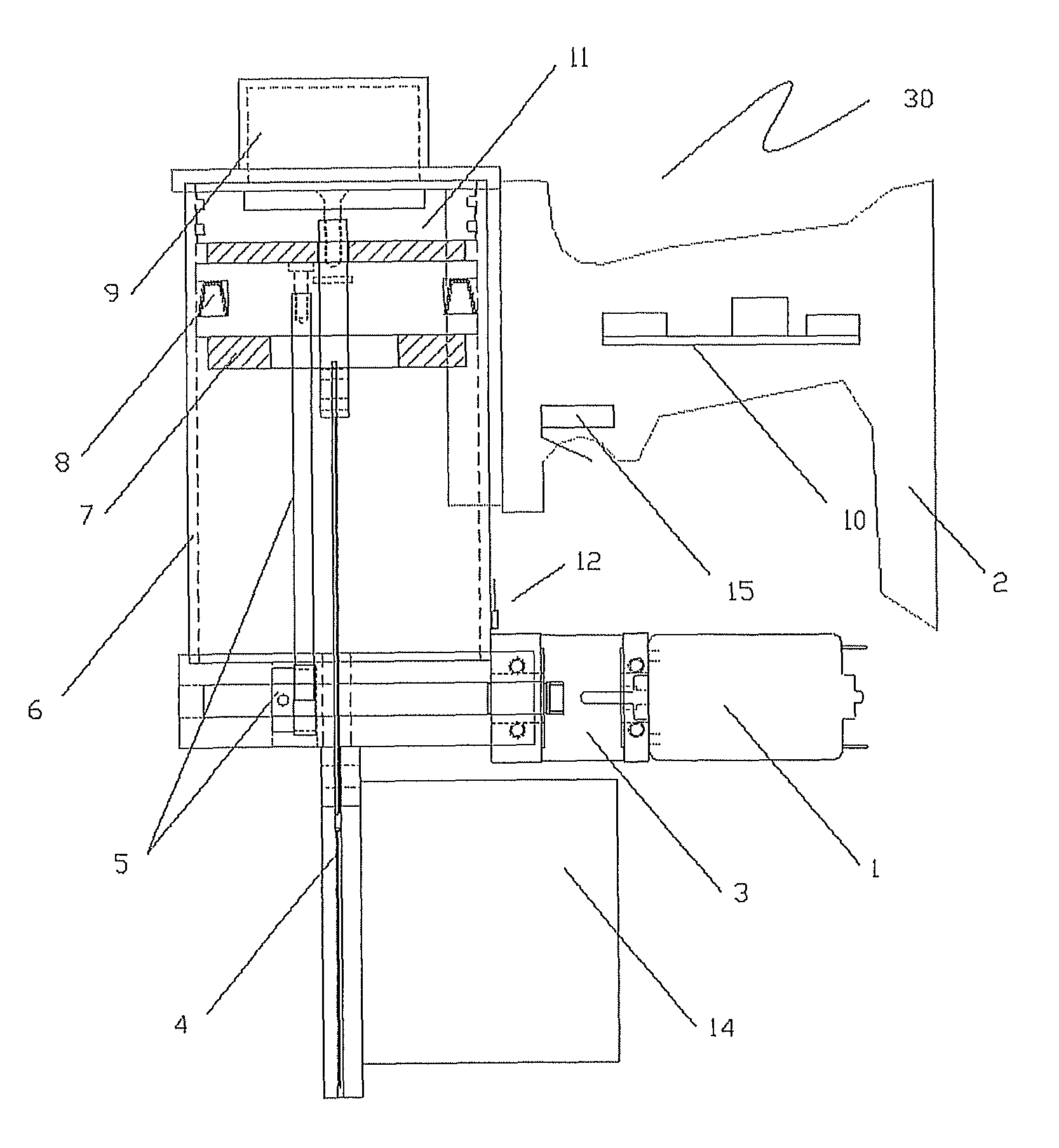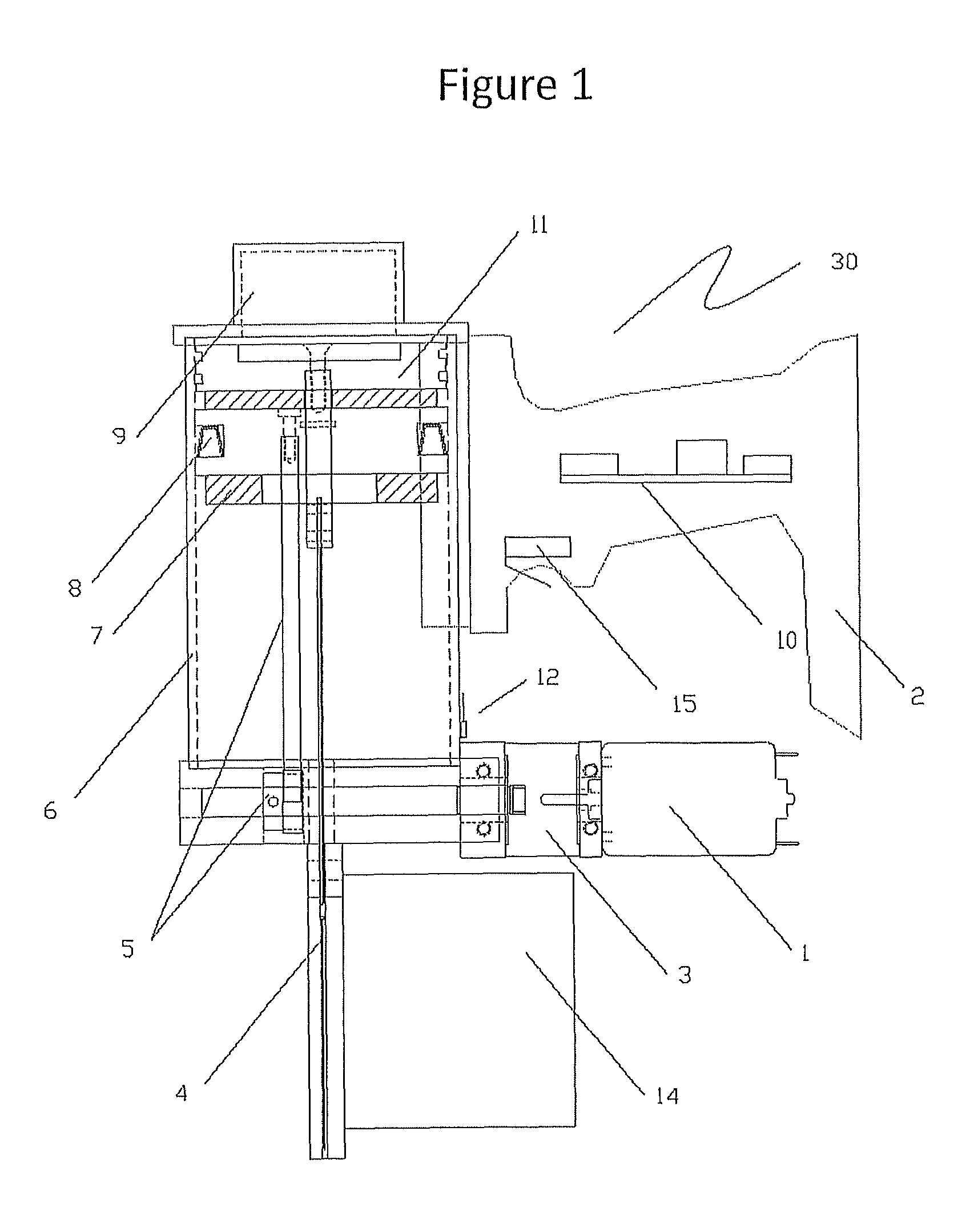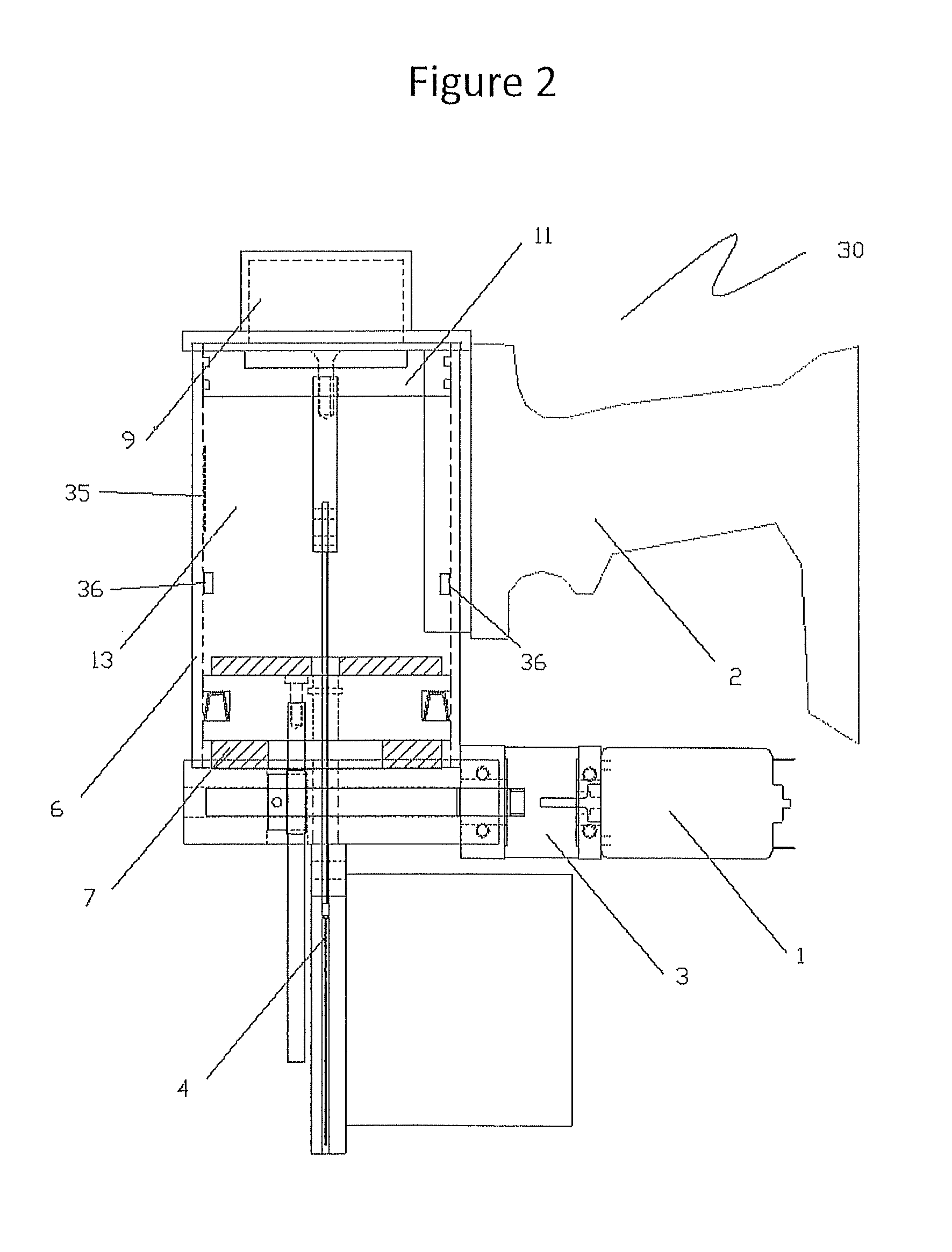This design is complicated and is far more expensive then a standard pneumatic fastener gun.
The chambering of an explosive mixture of fuel, the use of consumable fuel cartridges, the loud report and the release of
combustion products are all disadvantages of this solution.
These units are limited to short fasteners (typically 1″ or less), are subject to high reactionary forces on the user and are limited in their repetition rate.
Additionally, because of the use of mechanical springs or solenoids, the ability to drive longer fasteners or larger fasteners is severely restricted, thus relegating these devices to a limited range of applications.
A further
disadvantage of the solenoid driven units is they often must be plugged into the wall in order to have enough
voltage to create the force needed to drive even short fasteners.
The primary drawback to such a tool is the large weight and size as compared to the pneumatic counterpart.
Additionally, the drive mechanism is very complicated, which gives a high retail cost in comparison to the pneumatic fastener gun.
The disadvantages in this design include increased operator fatigue since the actuation technique is a series of blows rather than a single drive motion.
A further disadvantage is that this technique requires the use of an
energy absorbing mechanism once the fastener is seated.
Additionally, the multiple
impact designs are not very efficient because of the constant motion reversal and the limited operator production speed.
Several drawbacks exist to this design.
These include the need for a
complex system of compressing and controlling the spring, and in order to store sufficient energy, the spring must be very heavy and bulky.
Additionally, the spring suffers from fatigue, which gives the tool a very
short life.
Finally,
metal springs must move a significant amount of
mass in order to decompress, and the result is that these low-speed fastener drivers result in a high reactionary force on the user.
This patent overcomes some of the problems associated with the mechanical spring driven fasteners described above, but is subject to other limitations.
One particular troublesome issue with this design is the safety
hazard in the event that the anvil
jams on the downward
stroke.
If the fastener
jams or buckles within the feeder and the operator tries to clear the jam, he is subject to the full force of the anvil, since the anvil is predisposed to the down position in all of these types of devices.
A further disadvantage presented is that the fastener must be led once the anvil clears the fastener on the backward
stroke.
The amount of time to feed the fastener is limited and can result in
jams and poor operation, especially with longer fasteners.
A further disadvantage to the
air spring results from the need to have the ratcheting mechanism as part of the anvil drive.
This mechanism adds weight and causes significant problems in controlling the fastener drive since the weight must be stopped at the end of the
stroke.
This
added mass slows the fastener drive stroke and increases the reactionary force on the operator.
The drive or compression mechanism used in this device is limited in stroke and thus is limited in the amount of energy which can be stored into the air
stream.
Furthermore, the compression mechanism is bulky and complicated, in addition, the timing of the motor is complicated by the small amount of time between the release of the piston and anvil
assembly from the drive mechanism and its subsequent re-engagement.
Additionally, U.S. Pat. No. 5,720,423 teaches that the anvil begins in the retracted position, which further complicates and increases the sin of the drive mechanism.
This method of compression and release causes severe mechanism wear.
One major drawback to this design is the problem of
coupling the
flywheel to the driving anvil.
This prior art teaches the use of a friction clutching mechanism that is both complicated, heavy and subject to wear.
Further limiting this approach is the difficulty in controlling the energy in the fastener system.
This further increases the design complexity and size of such prior art devices.
This system overcomes many of the advantages of the previous systems but still has its own set of disadvantages which include the need to retain a very
high pressure for a short period of time.
This pressure and subsequent force necessitate the use of high strength components and more expensive batteries and motors.
All of the currently available devices suffer from one or more the following disadvantages:Complex and expensive and unreliable designs.
Fuel powered mechanisms such as Paslode™ achieve portability but require consumable fuels and are expensive.
This adds to their expense.Poor ergonomics.
The multiple
impact devices are fatiguing and are noisy.Non-portability.
Traditional fastener guns are tethered to a fixed compressor and thus must maintain a separate supply line.High Reaction force and
short life.
Mechanical spring driven mechanisms have high tool reaction forces because of their long fastener drive times. Additionally, the springs are not rated for these types of duty cycles leading to
premature failure.
Furthermore consumers are unhappy with their inability seat longer fasteners or work with denser wood species.Safety issues.
The “air spring” and heavy spring driven designs suffer from safety issues for longer fasteners since the predisposition of the anvil is towards the substrate.
During
jamb clearing, this can cause the anvil to strike the operators hand.The return mechanisms in most of these devices involve taking some of the drive energy.
All of these mechanisms take energy away from the drive stroke and decrease efficiency.
 Login to View More
Login to View More 


